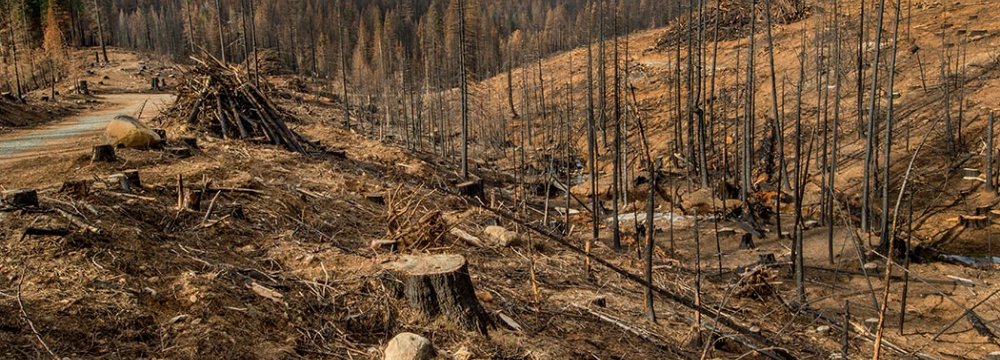Among the numerous benefits of forests is their ability to counter the detrimental effects of many natural phenomena and human activities, such as climate change and air pollution.
“Forests can help mitigate the effects of global warming by absorbing carbon dioxide in the atmosphere,” said Maryam Haqiqi Khomami, a researcher and environmental activist.
Speaking to ISNA, she said the concentration of carbon dioxide in the atmosphere has jumped by 31% since the year 1750 (used as the baseline year for the end of the pre-industrial era) thanks to excessive use of fossil fuels, but forests can help rein in the increase in CO2 levels and consequently help avert some of the most severe fallouts of climate change.
“In the growing season, the planet’s trees absorb 4 tons of carbon dioxide plus 3.1 tons of carbon monoxide from the atmosphere every day,” the academic said, adding that deforestation alone is responsible for the release of 20% of the world’s greenhouse gases.
Each hectare of forest is capable of absorbing 68 tons of dust and particles blown by wind, preventing major dust storms that can wreak havoc on cities, crippling life and inflicting untold misery on people.
In the past few years, inhabitants of Khuzestan Province in the southwest and Sistan-Baluchestan Province in the southeast have had to endure frequent and intense dust storms, due to a severe lack of vegetation and consecutive years of drought, which has rendered rivers and wetlands dry, turning them into sources of dust storms.
Forests are also home to various animal and plant species, making their conservation all the more important.
“Forests are renewable resources, so sustainable use of the woodlands will ensure their survival. But that’s not what’s happening,” Haqiqi said, urging NGOs and government officials to double their efforts to raise awareness regarding the importance of forests to life on Earth.
According to statistics provided by Mehr News Agency, a whopping 21,000 hectares of forest is damaged and/or cleared every minute in Iran for a variety of reasons.
Forests cover 14 million hectares of Iran — less than 10% of the land area — which is relatively small compared to the global average, but nothing short of a blessing given the country’s geographical location.





